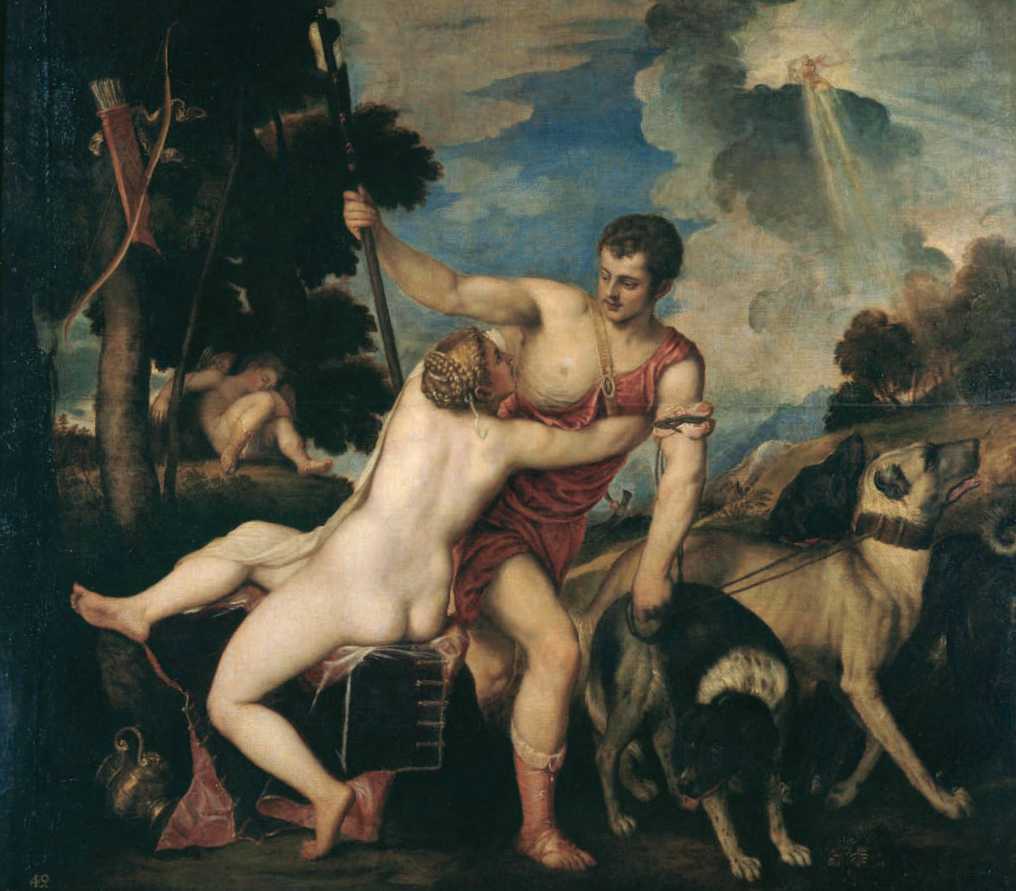Adonis was not invented by the Greeks but adopted by them from ancient vegetation myths of western Asia. His story first appeared in texts of the 14th century BCE written in Ugaritic, an extinct language of northern Syria. The name itself is a variation of adonai, a Hebrew word meaning “lord” that is one of the names ofJehovah in the Old Testament of the Bible.
Adonis and Aphrodite are thought to have originally been a single entity—the male and female forms of a single deity. Almost as soon as they had been separated into two different deities, however, they were reunited in legend as

Above: This painting by Titian (c. 1489—1576) shows Venus (the Roman equivalent of the Greek Aphrodite) embracing Adonis.
Lovers. This embellishment is similar to—and almost certainly derived from—the story of Astarte, the Phoenician fertility goddess who also had a lover named Adonis. Among other earlier examples of a union between a god and a goddess of vegetation is the marriage of Tammuz and Ishtar in ancient Babylonian mythology. After their wedding, Tammuz was cut down like wheat in the fields. The inconsolable Ishtar sought him out in the underworld and persuaded the goddess of death to return him for half the year.
In Greek mythology, the closest equivalent to the story of Adonis comes from Phrygia, Asia Minor (part of modern Turkey). It concerns Attis, a beautiful shepherd boy, and the mother goddess Cybele. Mad with love, Attis pursued Cybele, who repelled all his advances. In despair, he emasculated himself, and plants grew where he bled. In another version of the legend, Zeus sent a boar that gored him to death. After his resurrection, Attis finally wed the
Repentant Cybele. The ceremony was later imitated by cultists as a way of giving thanks for the harvest in the fall and praying for the renewal of vegetation in the spring.




 World History
World History









